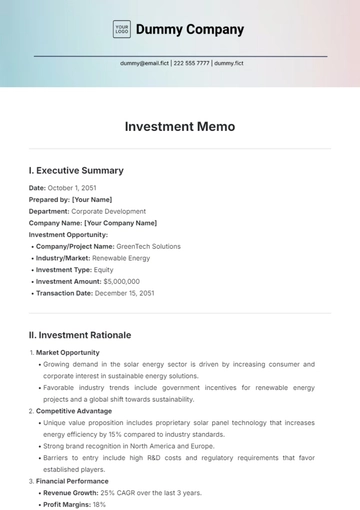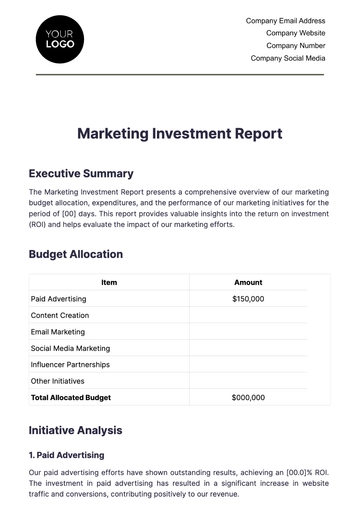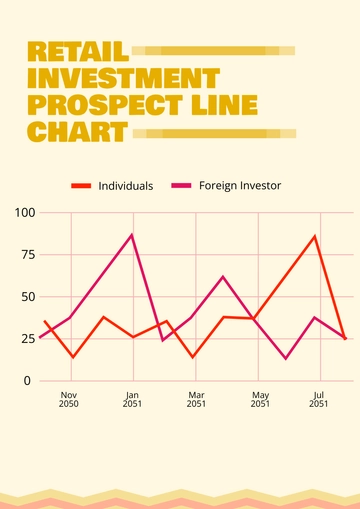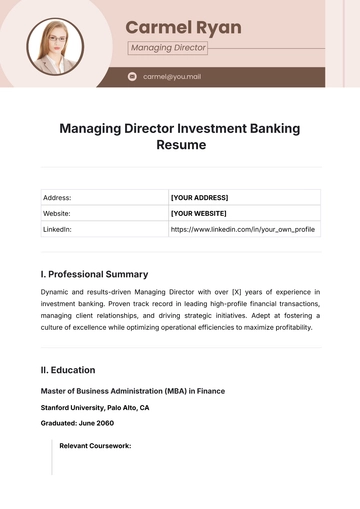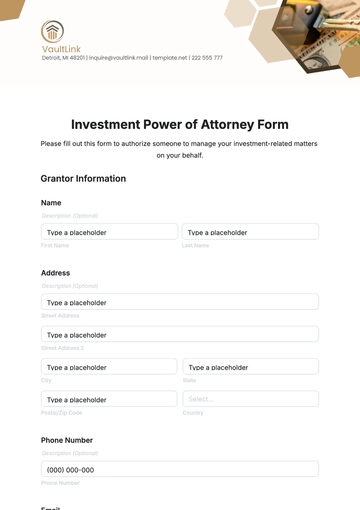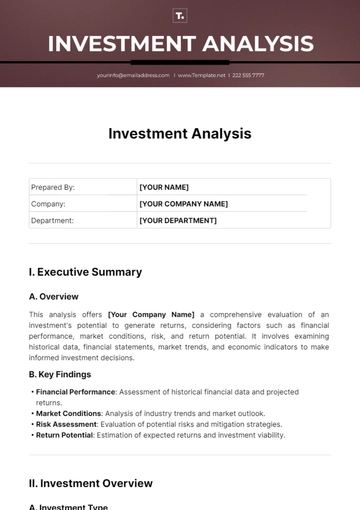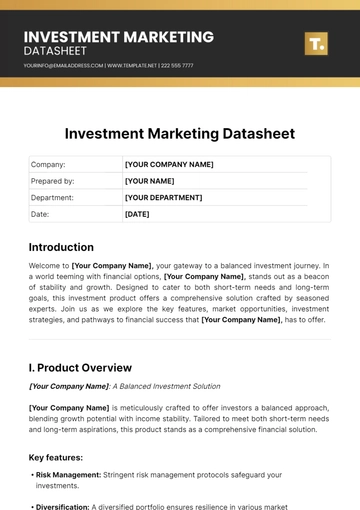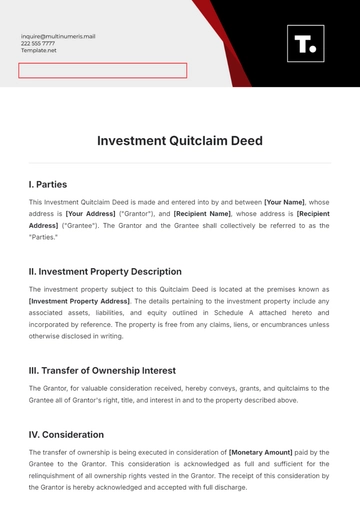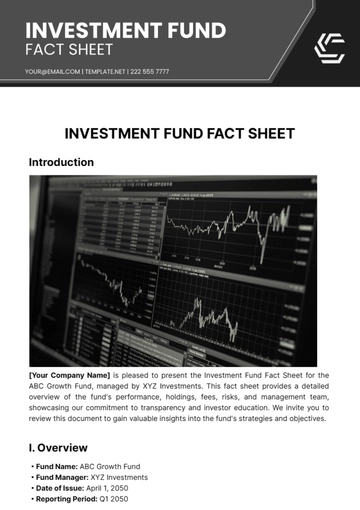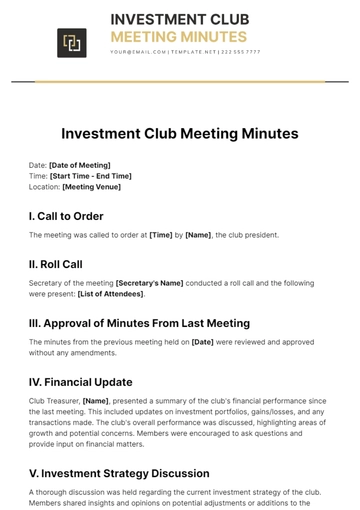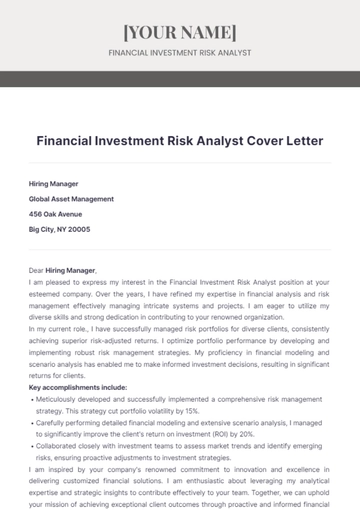Free Investment Strategy Brief
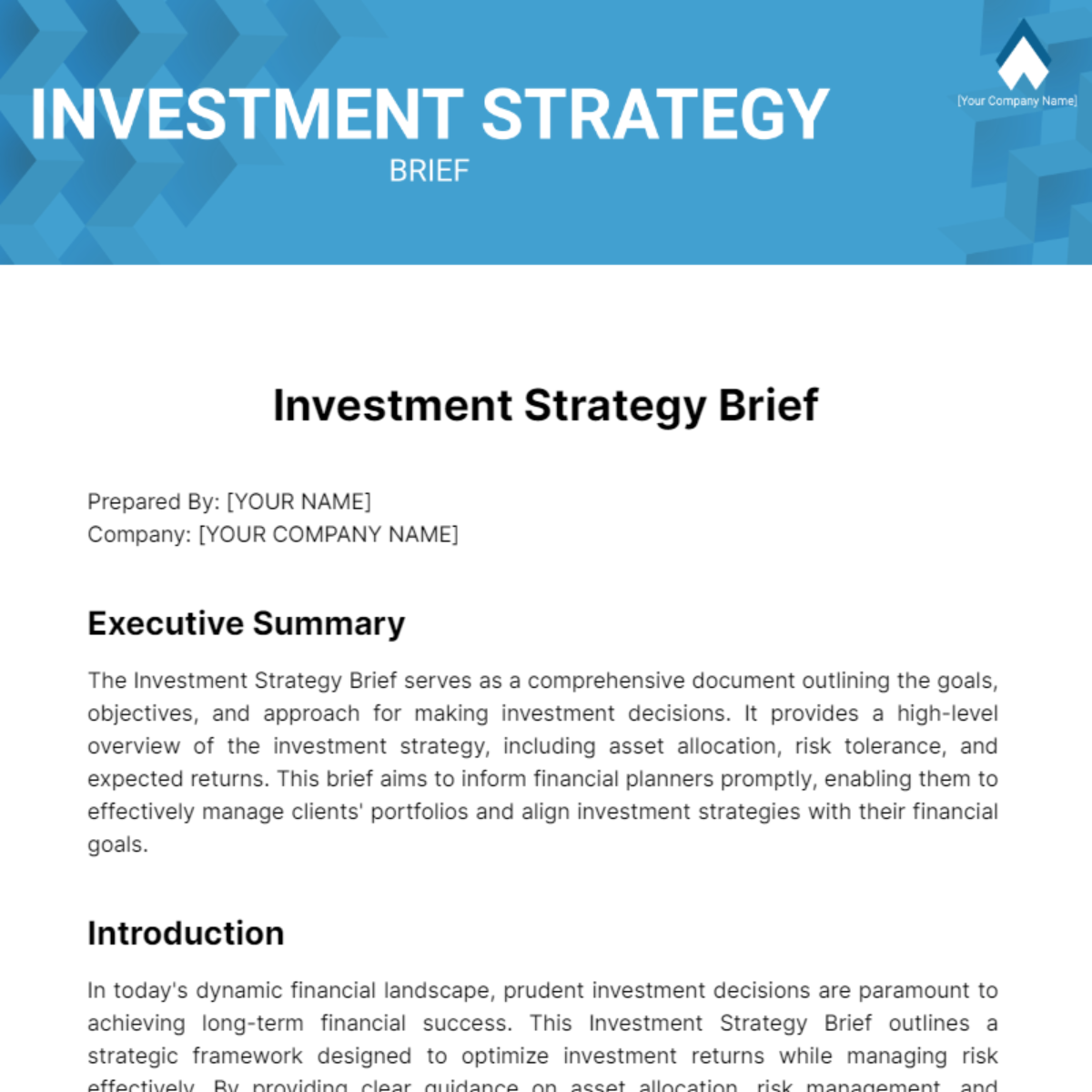
Prepared By: [YOUR NAME]
Company: [YOUR COMPANY NAME]
Executive Summary
The Investment Strategy Brief serves as a comprehensive document outlining the goals, objectives, and approach for making investment decisions. It provides a high-level overview of the investment strategy, including asset allocation, risk tolerance, and expected returns. This brief aims to inform financial planners promptly, enabling them to effectively manage clients' portfolios and align investment strategies with their financial goals.
Introduction
In today's dynamic financial landscape, prudent investment decisions are paramount to achieving long-term financial success. This Investment Strategy Brief outlines a strategic framework designed to optimize investment returns while managing risk effectively. By providing clear guidance on asset allocation, risk management, and investment rationale, this brief empowers financial planners to make informed decisions that align with clients' objectives.
Asset Allocation and Recommendations
Our investment strategy emphasizes the importance of strategic asset allocation tailored to individual risk profiles and investment objectives. Through a diversified mix of asset classes, including stocks, bonds, real estate, and alternative investments, we aim to achieve optimal risk-adjusted returns. Our recommendations prioritize long-term wealth accumulation while mitigating downside risk, ensuring resilience in the face of market volatility.
Portfolio Diversification Strategies
Asset Class Diversification: We allocate investments across multiple asset classes, including equities, fixed income, real estate, and alternative investments. This diversification helps mitigate risks associated with any single asset class and provides exposure to different market segments, each with its risk-return profile.
Sector and Industry Diversification: Within equity investments, we diversify across various sectors and industries to reduce concentration risk. By spreading investments across sectors such as technology, healthcare, consumer goods, and financials, we aim to capture growth opportunities while minimizing exposure to sector-specific risks.
Geographic Diversification: We invest globally to access opportunities in different regions and economies. Geographic diversification reduces exposure to country-specific risks, political instability, and currency fluctuations. Our portfolios include investments in developed markets, emerging markets, and frontier markets to achieve broad diversification benefits.
Market Capitalization Diversification: We diversify across companies of different market capitalizations, including large-cap, mid-cap, and small-cap stocks. This diversification strategy helps balance exposure to companies of varying sizes and growth potential, mitigating risks associated with any single segment of the market.
Asset Allocation Diversification: Within each asset class, we further diversify by allocating investments across different investment vehicles, such as mutual funds, exchange-traded funds (ETFs), individual securities, and managed accounts. This diversification approach helps optimize risk-adjusted returns and provides flexibility to adapt to changing market conditions.
Risk Factor Diversification: In addition to traditional asset class diversification, we consider factors such as growth, value, momentum, and quality when constructing portfolios. By diversifying across different risk factors, we seek to enhance risk-adjusted returns and reduce portfolio volatility, especially during periods of market turbulence.
Correlation Analysis: We conduct correlation analysis to assess the relationships between different assets within the portfolio. By selecting assets with low or negative correlations, we aim to build diversified portfolios that offer better risk management and smoother returns over time.
Rebalancing: We regularly rebalance portfolios to maintain desired asset allocations and diversification levels. Rebalancing involves selling assets that have appreciated and reallocating proceeds to underperforming assets, ensuring that portfolios stay aligned with long-term investment objectives and risk tolerance.
Tailored Investment Strategies
Understanding Client Needs
Conduct in-depth consultations to understand the financial situation, objectives, and risk tolerance.
Identify key factors such as income requirements, liquidity needs, time horizons, and legacy planning considerations.
Retirement Planning
Design strategies for accumulating wealth to support the desired retirement lifestyle.
Utilize retirement accounts like IRAs and 401(k)s along with diversified portfolios for long-term growth.
Consider retirement age, income needs, and lifestyle preferences.
Wealth Preservation
Develop strategies to safeguard and grow assets while minimizing downside risk.
Emphasize capital preservation techniques and allocation to low-risk assets such as bonds.
Employ risk management strategies like hedging to protect portfolios from volatility.
Capital Growth
Create strategies focused on maximizing long-term returns while managing risk.
Allocate to growth-oriented assets such as equities and alternative investments.
Balance growth potential with risk mitigation strategies to capture the upside while minimizing downside risk.
Customization and Flexibility
Adapt strategies to evolving client needs and market conditions.
Remain proactive in adjusting allocations and strategies as circumstances change.
Ensure ongoing monitoring and review to keep strategies aligned with objectives.
Investment Recommendations and Rationale
Equity Investments:
Overweight positions in technology and healthcare sectors due to:
Advancements in innovation driving growth opportunities.
Demographic shifts supporting long-term demand.
Robust earnings growth and attractive valuations.
Fixed Income:
Maintain exposure to high-quality bonds for stability.
Diversify into shorter-duration securities to mitigate interest rate risk.
Selectively allocate to inflation-protected securities to hedge against rising inflation expectations.
Real Estate:
Focus on well-diversified real estate investment trusts (REITs) and direct property investments.
Opportunities in residential and commercial properties, especially in emerging markets with favorable demographic trends.
Alternative Investments:
Allocate to private equity and venture capital for long-term capital appreciation.
Consider hedge funds and alternative strategies for downside protection and enhanced risk-adjusted returns.
Geographic Allocation:
Preference for developed markets with stable economic fundamentals and strong governance frameworks.
Balanced allocation to both developed and emerging markets to capture global growth opportunities while managing downside risk.
Rationale:
Grounded in thorough research and analysis of market dynamics, economic indicators, and fundamental trends.
A transparent approach ensures clients understand the reasoning behind recommendations, fostering trust and confidence in investment decisions.
Monitoring and Evaluation Framework
Continuous monitoring and evaluation form the cornerstone of our investment approach, facilitating agility in response to market shifts and client needs. Our framework encompasses a systematic process designed to ensure ongoing alignment with investment objectives and optimize portfolio performance. Below are the specific components of our monitoring and evaluation framework:
Regular Performance Reviews: We conduct comprehensive performance reviews at predefined intervals, typically quarterly or semi-annually, to assess portfolio performance against established benchmarks and objectives. These reviews involve quantitative analysis of investment returns, volatility measures, and portfolio risk characteristics.
Risk Assessments: Concurrent with performance reviews, we conduct rigorous risk assessments to evaluate the overall risk exposure of the portfolio. This includes assessing factors such as market risk, credit risk, liquidity risk, and operational risk. By identifying potential sources of risk, we can implement risk mitigation strategies and ensure the portfolio remains within acceptable risk parameters.
Benchmark Comparison: We compare portfolio performance against relevant benchmarks tailored to the specific investment strategy and asset allocation. This allows us to gauge relative performance and identify areas of strength or weakness. Discrepancies between portfolio returns and benchmark returns inform our decision-making process and guide adjustments to the investment strategy as needed.
Client Objectives Alignment: We continuously evaluate the alignment of the investment strategy with client objectives, preferences, and risk tolerance. Through regular communication and feedback sessions with clients, we ensure that their evolving financial goals and circumstances are reflected in the portfolio construction and investment decisions.
Dynamic Asset Allocation: Based on the insights gained from performance reviews, risk assessments, and client feedback, we employ a dynamic asset allocation approach. This involves making timely adjustments to the portfolio's asset mix, sector exposures, and individual security holdings to capitalize on opportunities and mitigate risks in response to changing market conditions.
Documentation and Reporting: We maintain thorough documentation of monitoring and evaluation activities, including performance reports, risk assessments, and the rationale behind investment decisions. This ensures transparency and accountability in our investment process and facilitates communication with clients and stakeholders.
Compliance and Regulatory Oversight: Our monitoring and evaluation framework adheres to all relevant regulatory requirements and industry best practices. We conduct regular compliance reviews to ensure adherence to applicable regulations and guidelines, safeguarding the interests of our clients and maintaining trust and integrity in our investment process.
Conclusion
The Investment Strategy Brief provides a comprehensive roadmap for guiding investment decisions and optimizing portfolio performance. By emphasizing strategic asset allocation, diversification, and tailored investment strategies, we aim to deliver superior outcomes that align with clients' long-term financial goals. Through diligent monitoring and evaluation, we remain committed to delivering value and fostering financial prosperity for our clients.
- 100% Customizable, free editor
- Access 1 Million+ Templates, photo’s & graphics
- Download or share as a template
- Click and replace photos, graphics, text, backgrounds
- Resize, crop, AI write & more
- Access advanced editor
Introducing the Investment Strategy Brief Template from Template.net: your key to strategic financial planning. This customizable and editable template simplifies investment strategy development, ensuring precision and efficiency. With our Ai Editor Tool, effortlessly tailor every detail to match your investment goals. Simplify strategy creation and elevate your financial decisions with ease, exclusively on Template.net.


